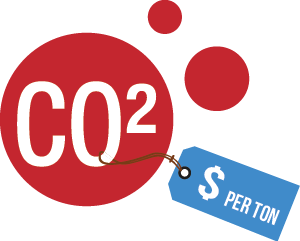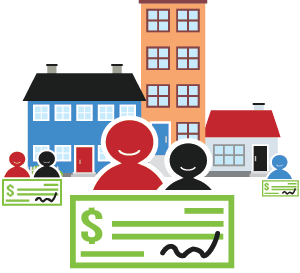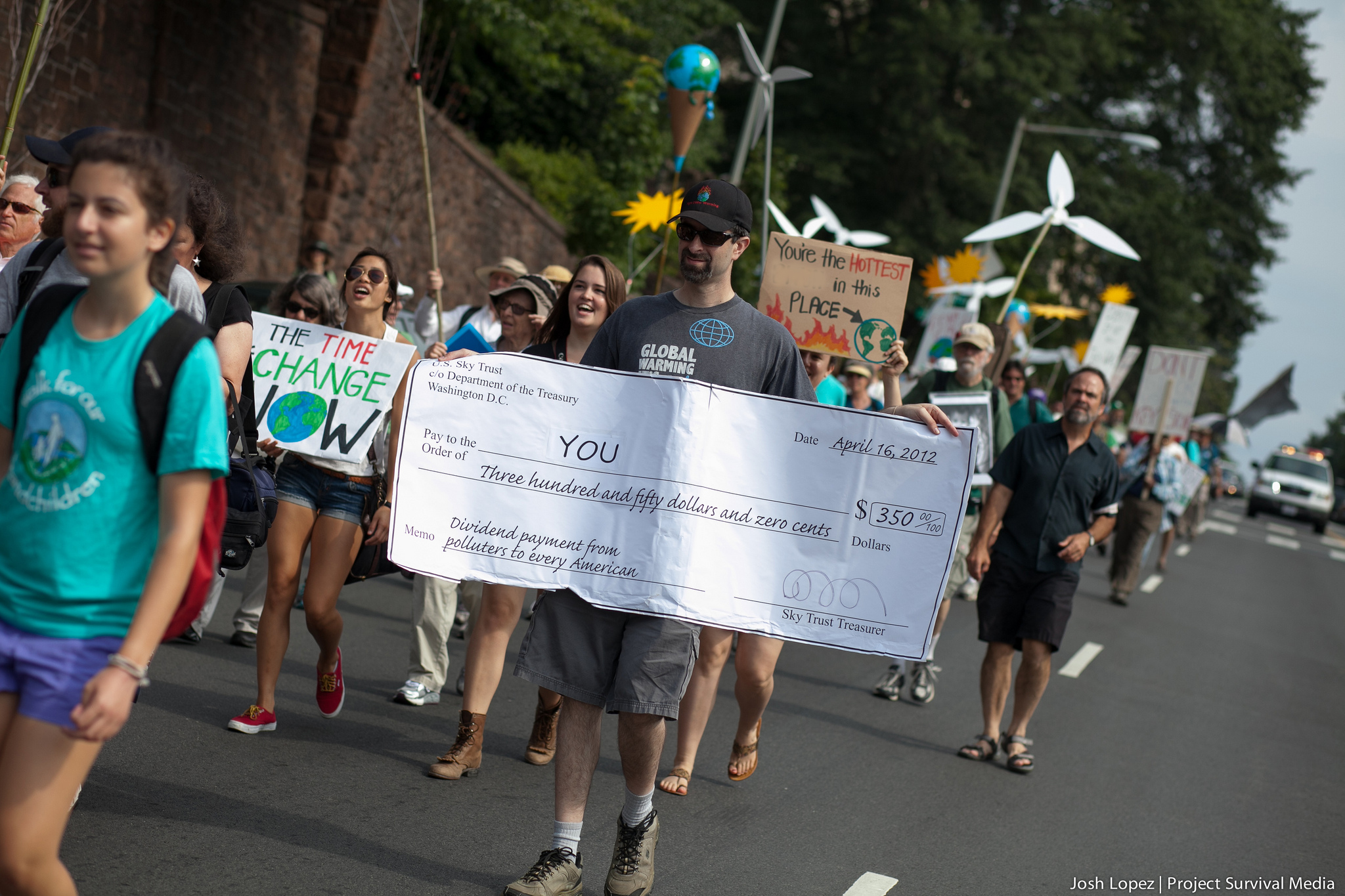Cap and dividend is a simple solution that will have a big positive impact on the climate and U.S. families. How does it work? Read on for a primer on the basics.
1. Set a Cap on the Fossil Fuel Pollution Harming Our Planet
 By placing a steadily declining cap on total U.S. carbon pollution, we will do our part to preserve a healthy global climate, avoiding the worst impacts of global warming. The Healthy Climate and Family Security Act, introduced by Congressman Chris Van Hollen (D-Md), requires CO2 emissions reductions of 20% by 2020, 40% by 2030, and 80% by 2050. Provisions are also made for these reductions to be strengthened if later scientific evidence requires changes “to avert catastrophic climate impacts.”
By placing a steadily declining cap on total U.S. carbon pollution, we will do our part to preserve a healthy global climate, avoiding the worst impacts of global warming. The Healthy Climate and Family Security Act, introduced by Congressman Chris Van Hollen (D-Md), requires CO2 emissions reductions of 20% by 2020, 40% by 2030, and 80% by 2050. Provisions are also made for these reductions to be strengthened if later scientific evidence requires changes “to avert catastrophic climate impacts.”
2. Make the Polluters—Coal, Oil and Gas Companies—Pay
 There are approximately 2,500 companies that actually introduce fossil fuels into the economy, either via extraction from the ground or by importing these fuels from abroad. All companies that are the first to sell fossil fuels into the US economy must purchase a permit at a government-organized, quarterly auction for every ton of CO2 the fuels will emit. Over the first 10 years of this program, the auction is expected to raise over half a trillion dollars.
There are approximately 2,500 companies that actually introduce fossil fuels into the economy, either via extraction from the ground or by importing these fuels from abroad. All companies that are the first to sell fossil fuels into the US economy must purchase a permit at a government-organized, quarterly auction for every ton of CO2 the fuels will emit. Over the first 10 years of this program, the auction is expected to raise over half a trillion dollars.
3. Rebate 100% of the Money Raised to U.S. Residents
 All of the money raised at the permit auction will be returned – in equal amounts – to every U.S. resident with a valid Social Security number. This “dividend” will be sent out each quarter, mostly via electronic deposits. Prices for carbon-intensive energy and goods would rise, meanwhile, as the overall cap on CO2 is tightened to meet the emissions reduction targets. But the carbon rebate, or dividend, will protect and actually benefit most families. How? With an assumed initial auction price of $10/ton of CO2, a median family of four would receive about $640/year and pay about $380 as a result of higher fossil fuel prices, receiving a net benefit of about $260/year. That amount will steadily increase in following years. This climate dividend will help protect families from rising fossil fuel energy prices. Indeed, all lower and middle-income Americans will see a net increase in their annual income
All of the money raised at the permit auction will be returned – in equal amounts – to every U.S. resident with a valid Social Security number. This “dividend” will be sent out each quarter, mostly via electronic deposits. Prices for carbon-intensive energy and goods would rise, meanwhile, as the overall cap on CO2 is tightened to meet the emissions reduction targets. But the carbon rebate, or dividend, will protect and actually benefit most families. How? With an assumed initial auction price of $10/ton of CO2, a median family of four would receive about $640/year and pay about $380 as a result of higher fossil fuel prices, receiving a net benefit of about $260/year. That amount will steadily increase in following years. This climate dividend will help protect families from rising fossil fuel energy prices. Indeed, all lower and middle-income Americans will see a net increase in their annual income
4. We Achieve a Healthy Climate and Greater Economic Security for Families
 By putting a price on carbon, this will provide a great incentive for energy conservation, energy efficiency and a shift to clean, renewable sources of energy. As carbon-intensive companies begin to pay for their pollution, the cost of dirty energy – and the products containing them – will rise incrementally in the marketplace. This will encourage families to conserve and look for energy-efficient products to save money. At the same time, the quarterly dividend will ensure that the great majority of American families are better off economically even with those price increases.
By putting a price on carbon, this will provide a great incentive for energy conservation, energy efficiency and a shift to clean, renewable sources of energy. As carbon-intensive companies begin to pay for their pollution, the cost of dirty energy – and the products containing them – will rise incrementally in the marketplace. This will encourage families to conserve and look for energy-efficient products to save money. At the same time, the quarterly dividend will ensure that the great majority of American families are better off economically even with those price increases.
Also, as pollution permit prices rise, companies that buy and sell fossil fuels will have an incentive to invest in clean, renewable energy options that don’t require CO2 pollution permits. Over time, consumers will benefit both economically and environmentally from cleaner air, water and land, millions of jobs created in energy efficiency and renewable energy, and money in families’ bank accounts during the transition.
